 Your new post is loading...

|
Scooped by
rob halkes
April 9, 2013 5:14 AM
|
Social media effect hospital choice of patients!

|
Scooped by
rob halkes
April 4, 2013 3:47 AM
|
Although our attention may be distracted from time to time by a health-related smartphone or tablet app, a health tracking device, a quantified self peripheral, or some another piece of shiny, soon-to-be-outmoded future junk, I hope it is becoming obvious by now that the best digital health app currently available is conversation. It is the health conversation on the social web that can best interpret, filter and respond to our need for high quality information regarding disease symptoms, diagnosis and treatment options. It is conversation that conveys the insight of trusted voices to inform our shared healthcare decision-making. ...

|
Scooped by
rob halkes
March 12, 2013 12:14 PM
|
UK doctors have been given new guidance to help them provide patients with online access to services like booking GP appointments and ordering repeat prescriptions. Patient Online: a Roadmap also covers such other 'transactional services' as secure online communication with the practice and access to online records. Health Secretary Jeremy Hunt said: “Appointments, prescriptions and test results can, and should be, only a click away. Records - which help patients work in partnership with their doctor to manage their care - also need to be easily accessible.” Hunt has an ambitious plan for the NHS to go paperless by 2018 and as part of this the NHS Commissioning Board wants all GP practices in England to offer patients online access to their records and transactional services by 2015. The Royal College of General Practitioners' (RCGP), which lead on the development of the new guidance, says giving patients access to their own records presents both “great opportunities and major challenges”.

|
Scooped by
rob halkes
March 4, 2013 4:18 AM
|
Department of Health's whole systems demonstrator research calls into question degree of enthusiasm for the technology, says David Brindle Expectations of the benefits of telehealth technology may be scaled back after a study found it was "not effective" in improving the quality of life of people with long-term conditions. The research, the latest findings to emerge from the Department of Health's whole system demonstrator (WSD) evaluation of telehealth and telecare, the world's biggest trial of the technology, calls into question the degree of official enthusiasm for its adoption. Telehealth has been seen as a potential breakthrough in the care and support of more than 15 million people living with long-term conditions, who account for half all GP appointments and three-quarters of hospital bed use. By helping them better manage their conditions at home, it is expected to reduce their demands on health services. However, the research – conducted over 12 months among 1,500 patients with lung disease, diabetes or heart failure in Cornwall, Kent and London – found that telehealth use had no impact on generic quality of life anxiety or depressive symptoms. Writing for the British Medical Journal on bmj.com, the study team concludes: "Our findings strongly suggest no net benefit from telehealth; therefore, it should not be used as a tool to improve health-related quality of life or psychological outcomes."...

|
Scooped by
rob halkes
March 3, 2013 12:57 PM
|
In July of 2012, National eHealth Collaborative (NeHC) convened a meeting of the Consumer Consortium on eHealth. The Consortium was created in early 2011 and has since developed into a diverse group of over 300 individuals and organizations, united in the common goal to use health IT to engage patients in their care. During the 2012 Consumer Engagement Summit, it became clear that something had changed in the way people were talking about patient engagement. In 2011, there had been a persistent question: “Why patient engagement?” By this past summer, the questions were: “How do we do it?” and “Where do we start?” It was with that zeal and enthusiasm that NeHC, led by Board member and Senior Vice President for Policy at Healthwise Leslie Kelly Hall, embarked on an effort to help organizations identify that starting point and give them a finish line to strive toward. This year NeHC, with the participation and contribution of over 150 collaborators, pointed out the path to the finish line with the Patient Engagement Framework. The Framework provides a guide for healthcare organizations to think about patient engagement using eHealth tools and resources. It encompasses five phases of development to strengthen organizations’ patient engagement strategies: Inform Me, Engage Me, Empower Me, Partner With Me, and Support My e-Community. The characteristics of some of these phases include information and way finding, e-tools, patient-specific education, and the build-up to patient access to records, patient generated data, interoperable records, collaborative care, and community support.

|
Scooped by
rob halkes
March 1, 2013 5:01 AM
|
Watch our highlights video of Mobile World Congress 2013, an event that broke attendance records.

|
Scooped by
rob halkes
February 19, 2013 1:38 AM
|
Latest Healthcare IT News 15 February 2013 Lis Evenstad A Yorkshire project proves the cost benefits of telehealth, says a report on the scheme by think-tank 2020health. The report evaluates the Yorkshire and the Humber Telehealth Hub, which was set up in 2011 as a partnership between Airedale NHS Foundation Trust, the University of Hull and South West Yorkshire Partnership NHS Foundation Trust. The aim was to reduce hospital admissions and prove cost benefits. Despite struggles with clinical engagement and very low uptake in some areas, more than 2,000 patients were enrolled.

|
Scooped by
rob halkes
February 18, 2013 1:14 PM
|
By Dan Bowman NeHC framework aims to help providers improve patient access to electronic health records The patient engagement requirement included in Stage 2 of the Meaningful Use incentive program has many providers worried about whether or not they'll be able to convince their patients to use interactive online tools to access their health data. The National eHealth Collaborative, a Washington, D.C.-based public-private partnership geared toward enabling nationwide health information exchange, thinks it might be able to help. NeHC today released a model framework provider organizations can use to help spur patient engagement efforts. The model--dubbed the Patient Engagement Framework--is divided into five phases, each of which incorporates advice from organizations that have successfully launched and sustained patient engagement efforts. The five phases of the framework are: Inform Me: The most basic level of patient engagement. In this phase, providers make tools and forms available to patients.Engage Me: In this phase, patients have access to their electronic health records and take care of administrative tasks online, rather than in the office.Empower Me: In this phase, patients use secure messaging to communicate with their providersPartner with Me: In this phase, care is more seamless, as more advanced care management tools are utilized by patients to provide timely data to doctors.Support My e-Community: In this phase, providers likely are participating in accountable care or patient-centered medical home efforts using a full array of electronic tools to communicate and manage patients. Read more: ..!

|
Scooped by
rob halkes
February 18, 2013 12:39 PM
|
From Dan Bowman The simultaneous maturation of patient-centered healthcare, social media and the Internet has created what researchers from Brigham and Women's Hospital and Harvard Medical School are calling a "perfect storm" in healthcare with regard to how patients and organizations connect. Growing evidence of the effectiveness of patient-centered healthcare is causing many healthcare organizations to shift their strategies for care delivery, say the researchers in a recently published editorial in BMJ Quality & Safety. At the same time, federal agencies, like the Office of the National Coordinator are going all in on bets that patient engagement and digital tools represent the future of healthcare. What's more, social media sites like Facebook and Twitter have become "significant sources" of specific and individual healthcare information, according to the authors...

|
Scooped by
rob halkes
February 17, 2013 12:41 PM
|
Eighty-nine percent of doctors were likely to recommend a mobile health app to patients in a January 2013 surveyby ambulatory clinical solutions provider eClinicalWorks. The Westborough, Mass.-based company conducted the online survey of 2,291 healthcare professionals in the United States, 649 of whom were physicians. Ninety-three percent of doctors interviewed for the survey found value in connecting an mHealth app to electronic health records and 93 percent of physician respondents also saw mHealth apps improving a patient's health outcome. According to survey results, nearly six in 10 doctors (58 percent) said a top benefit for having an mHealth app feed data back into a patient's EHR was the ability to provide patients with automatic appointment alerts and reminders. In addition, six in 10 physicians also said that at least half of their patients would be interested in appointment reminders via a mobile app. Almost half of doctors in the survey cited a patient's access to medical records as a top benefit, as well as the ease of scheduling appointments. And, nearly two thirds of physician respondents said medication adherence is a top health issue in which an mHealth app linked to EHR could make an immediate impact, while more than half said diabetes (54 percent) and preventative care (52 percent) were other areas of potential benefit

|
Rescooped by
rob halkes
from NHS Health Reforms
February 12, 2013 7:12 AM
|
The government’s pathfinder scheme looks certain to fail to deliver a target of 100,000 telehealth users this year. There are around 5000 telehealth users in England.
Via John Worth

|
Scooped by
rob halkes
February 1, 2013 1:02 AM
|
Lucien engelen conducts this crowdsourcing experiment We at Radboud University Medical Center are in the midst of change while running the quest of how to cope with the big challenges that we are facing in healthcare. Doubling demand, budget cuts shortage of skilled personnel combined with better-informed patients and exponential growing technology are rapidly entering this space. Are we still delivering healthcare the same way in 2020 or will things change and even disappear ?.. I would like to do a little experiment to prove the power of social networks and social capital, by asking you to share your thoughts on the topics that should find their way into the newly REshaped curriculum for Medical Students. Let’s assume we can come up with the same, better, unsighted, unexpected views topics in a little social media experiment; so we need YOU ;-) So the BIG question is : What do we need to incorporate in a REshaped curriculum for medical students to be sustainable for the upcoming changes in healthcare ?

|
Scooped by
rob halkes
January 28, 2013 1:17 AM
|
69% of U.S. adults track a health indicator like weight, diet, exercise routine, or symptom. Of those, half track “in their heads,” one-third keep notes on paper, and one in five use technology to keep tabs on their health status.

|
Scooped by
rob halkes
January 27, 2013 9:22 AM
|
We have advised our personnel to observe these guidelines when participating in an online conversation regarding Ford or the automotive industry. These are a summary of our ethical policies.
As patients increasingly turn toward social media to access healthcare and self-diagnose, the patient-provider relationship is changing, the book argues. The first step in this change came when patients gained access to medical information online. Now they're adding the power of crowd sourcing, which means the healthcare industry isn't just seeing a more educated patient but also patients interpreting information and, essentially, becoming a member of their healthcare team. "Patients are becoming our colleagues," said co-author of 'Social Media For Nurses' Ramona Nelson. "It's changing relationships and the kinds of questions and services a patient asks for." With healthcare becoming increasingly virtual, said Wolf, it's becoming the provider's responsibility to direct patients to the best online resources. Looking ahead, Wolf advises that nurses and practitioners need to incorporate social media into a strategic plan to determine how they're going to use different platforms and extend services through them. This plan, she said, should be created from a clinical perspective as well as an IT perspective, allowing for an interdisciplinary approach. "Clinicians in services may not understand websites or synchronized information versus unsynchronized information," she said. "They need help to get them out there virtually."
Via Dan Baxter

|
Scooped by
rob halkes
January 16, 2013 7:31 AM
|
In partnership with Health 2.0 we’ve launched the Patient Portal for New Yorkers Design Challenge, which invites designers and developers to submit prototypes for a secure portal that will present patients with their individual PHR while educating...

|
Scooped by
rob halkes
January 15, 2013 11:01 AM
|
The LivingWell@Home program provides remote healthcare monitoring for 1,600 elderly patients in 5 states from a single surveillance center in South Dakota where nurses provide 24-hour observation. MASSDEVICE ON CALL — South Dakota is home to one of the most expansive remote healthcare monitoring programs in the world, with a team of nurses providing 24-hour monitoring of elderly patients across 5 states. The LivingWell@Home study enrolled 1,600 elderly patients in the remote monitoring program, hoping to assess impacts on healthcare costs, quality of care and senior independence, Kaiser Health News reported. Although no cameras or microphones are involved in the monitoring, the program still has to overcome a "Big Brother" bias among patients, according to the new service

|
Scooped by
rob halkes
January 11, 2013 8:08 AM
|
If EC plans succeed, they will transform the way technology is used This year looks set to be an interesting one for eHealth in Europe, as the European Commission tries to inject more pace into the area. Although it has been actively promoting eHealth in the region for over a decade, initial progress has been slow, only really picking up after the launch of 2010’s Digital Agenda. Health is a key component of that wide ranging, and ongoing, programme, but two eHealth initiatives that bookended 2012 could start accelerating progress. The year started with the Commission’s decision to set up an eHealth Network of national authorities, one of whose tasks would be to drive uptake of technologies like tele-monitoring and e-prescriptions. Then, as 2012 ended, came the Commission’s eHealth Action Plan, promising “smart and sustainable healthcare” and mapping out its targets until 2020 and assigning an integral role to the eHealth Network. Its part in the plans will see it working towards eHealth ‘interoperability’, essentially ensuring different systems can work together, for EU Member States.

|
Scooped by
rob halkes
January 11, 2013 6:35 AM
|
The functional scope is on eHealth and Active and Healthy Ageing. That is, eligible ICT solutions have to focus on the Healthcare and Active and Healthy Ageing markets. Biotech and medical devices are excluded from the eHealth Competition. The main criteria to select the winners will be technology innovation and short-term impact (multiple dimensions: on patients, on professionals, on economy, etc). REGISTRATION Fill this form before 31 of January 2013.

|
Scooped by
rob halkes
January 11, 2013 3:28 AM
|
Radiographers invited to share their research and projects (Telehealth and Telecare Congress issues call for papers http://t.co/MuBEyMar #radiography #radiology)...

|
Scooped by
rob halkes
January 11, 2013 3:26 AM
|
Telemedicine dominates the healthcare news these days as one solution to the (Telemedicine Tops the News Part 2 http://t.co/jhi6QTdc)
According to a recent press release, the Danish government is the first to adopt national technical guidelines and standards to establish reference architectures for healthcare IT. Design guidelines developed by Continua Health Alliance have been chosen as the framework for this groundbreaking telemedicine initiative
Via AttractiveHealthcare, Lionel Reichardt / le Pharmageek

|
Scooped by
rob halkes
January 11, 2013 3:15 AM
|
CES telehealth panel: The tide is (slowly) turning - mHIMSS: CES telehealth panel: The tide is (sl... http://t.co/ElhhPUxM #telemedicine

|
Scooped by
rob halkes
January 10, 2013 12:43 PM
|
What digital health means, examples and how it affects the healthcare industry and patients.

|
Scooped by
rob halkes
January 10, 2013 12:39 PM
|
Today, I visited the Oakland Children’s Hospital & Research Center where I met with hospital representatives and staff from the Alameda County Health Care Services Agency, the California (Telemedicine to Transform #Healthcare for Underserved and Rural...
|
 Your new post is loading...
Your new post is loading...











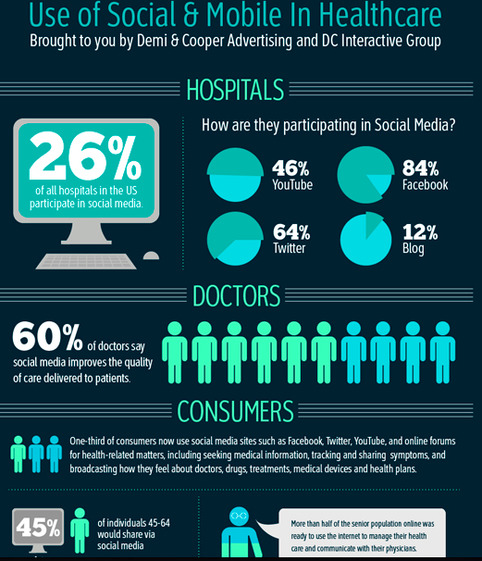

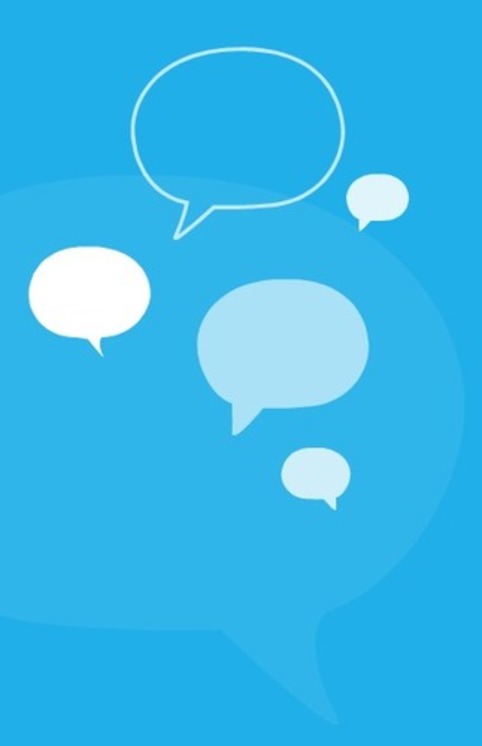
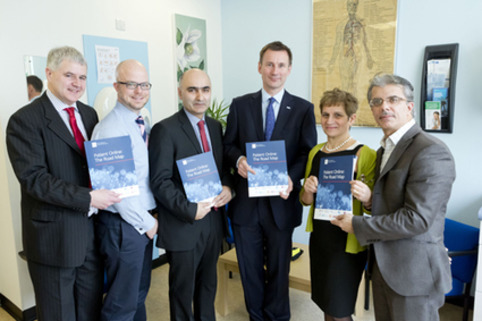



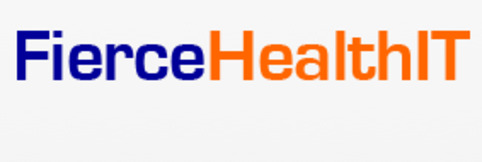


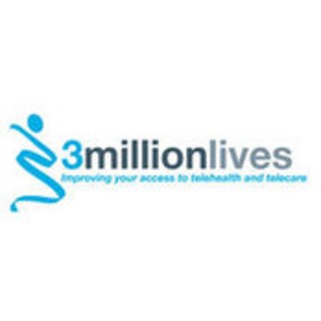


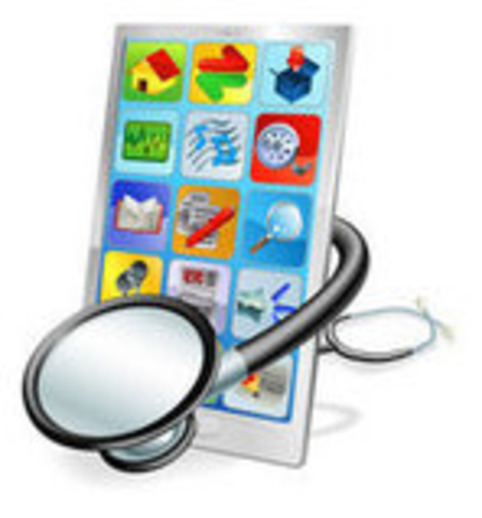
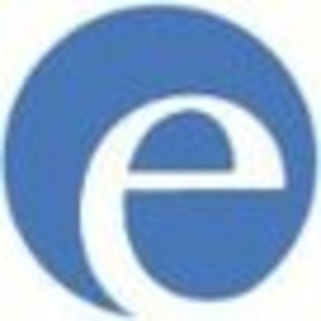

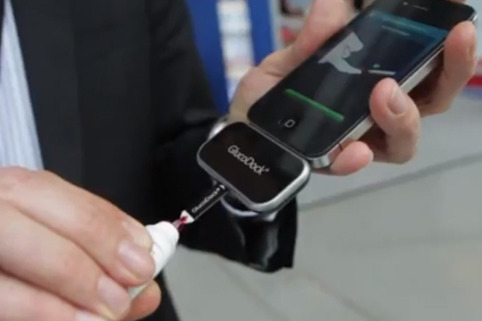


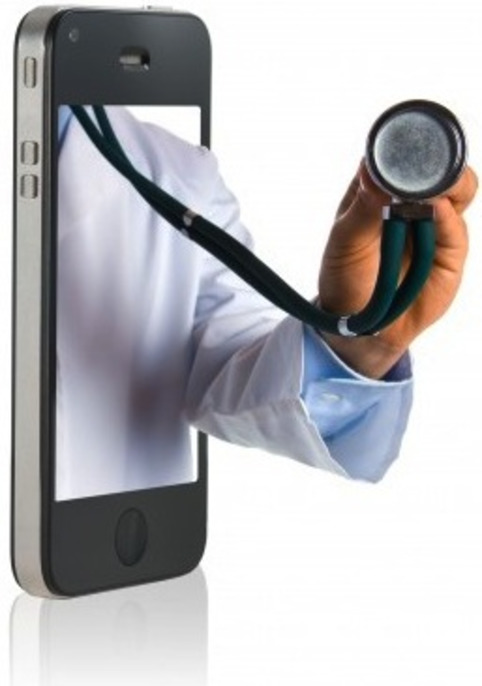

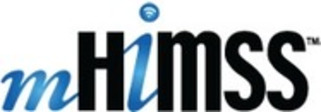







41% of 'those surveyed' said social media would effect their choice of health provider.
Conclusion: health services need to look at engaging in social media.